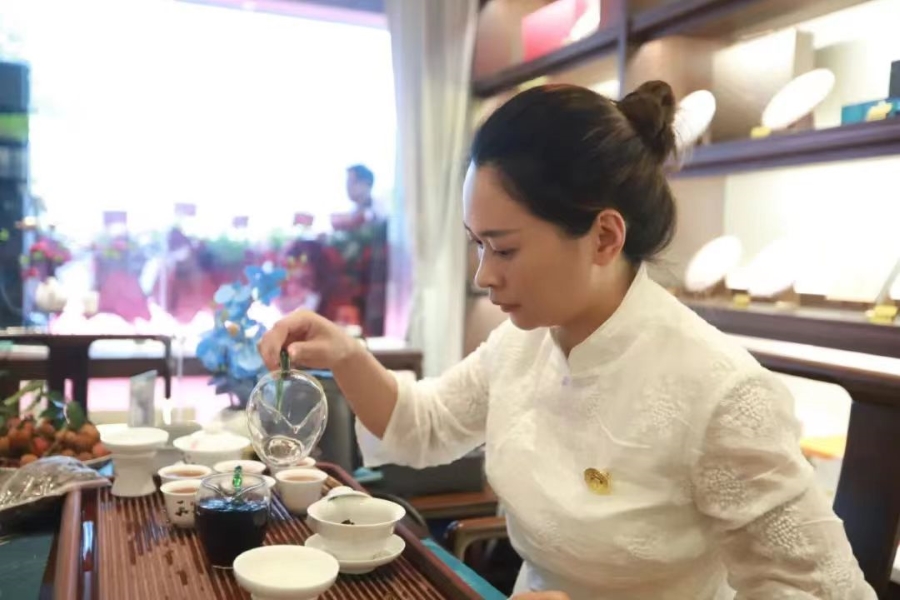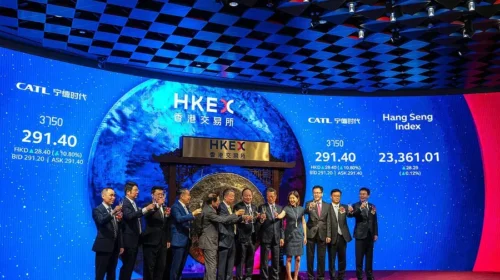Lancang May Give Investors a Bitter Tea Taste As It Prepares For an IPO

Lancang’s sales are increasing fast, but its earnings growth is hampered by high costs and falling margins
Key Takeaways:
- Lancang has filed for an IPO in Hong Kong after pulling the plug on a plan to go public on the mainland
- The company’s revenue increased some 38% last year but its net profit grew less than 5%
By Lau Ming
It’s no secret that the Chinese love tea. Yet it remains to be seen whether the national affection will translate into a flavorful valuation for teamaker Pu’er Lancang Ancient Tea Co. Ltd. when it goes public in Hong Kong.
The company, the second biggest maker of pu’er tea in China, is working on an IPO in Hong Kong to join a short list of publicly traded Chinese tea companies, according to a filing to the city’s stock exchange at the end of last month. This marks a pivot from its original plan to go public on the mainland two years ago, which it scrapped after authorities took issue with ownership changes and supply chain risks.
Being a major teamaker in China is no small matter, given that the country has a tea market worth more than $40 billion in terms of sales value. On top of that, pu’er, which Lancang specializes in as its name indicates, is the most popular type of tea, touted as “the drinkable antique.”
And as big as it is already, the market is continuing to grow. Frost & Sullivan projects that the industry’s revenue will increase at a compound annual growth rate of 6% from 2021 to 2026. What’s even more promising for Lancang is that sales of pu’er tea are expected to grow faster, at a double-digit rate.
Better yet, Lancang, which targets mid- to high-income earners, beat industrywide sales growth by a wide margin last year, logging an impressive 38% increase in revenue from 2020 despite the Covid-19 pandemic, according to the company’s IPO prospectus.
Underwhelming Profit Growth
But here’s a problem. The company’s net profit increased less than 5% last year, with its gross margin falling.
The company attributed the fall in it gross margin to an increase in production costs and spikes in sales and marketing expenses as it introduced more products.
Spending more to develop new products is not necessarily a bad thing. But swelling inventory may not go down with investors well. Lancang’s inventory grew 50% in 2021 from two years earlier. Again, this in itself may not be alarming as it can be an outcome of business expansion. But the problem is the company is clearing its inventory at a slower pace, meaning unsold products sitting on its shelves may be growing – and remember, these tea leaves have expiration dates. The ultimate risk is that the company may have to write off some of its inventory sooner or later, which would eat into its profit and erode its cash.
Another red flag is that Lancang is reliant on third-party distributors for more than 80% of its sales. One issue with this is that such heavy dependence makes it difficult for the company to manage the quality of distributors’ service. And because distributors keep their own accounts, Lancang may not have an accurate overview of sales and inventory, which can lead to bad marketing decisions.
Whether the company can stably secure raw materials is also a risk, particularly considering that it has only a few suppliers. When it first sought a mainland IPO, authorities raised concern about this vulnerability. And the company itself flagged a possible shortage of raw materials as a challenge in its prospectus for its Hong Kong listing plan.
The story of Zoneco Group (002069.SZ), a seafood processor and distributor, can offer investors a lesson. Remember what happened when the company said that its scallop supply ran out? Its share price plummeted. A similar incident can occur to Lancang, and it’s not hard to imagine how detrimental it’d be to its stock.
All these problems may explain why other big tea companies like Bama Tea, Anxi Tieguanyin Tea, Xieyuda and Qicai Yunnan have tried and failed to go public.
Also not helping improve investor perceptions of Chinese tea companies, Ping Shan Tea and Long Run Tea have been kicked off the Hong Kong stock exchange because of mismanagement, while Ying Kee Tea House (8241.HK) has been making growing losses since its listing in 2018.
One promising outlier is Tenfu Group (6868.HK). Its profit has been steadily rising in recent years, with its shares trading at a price-to-earnings (P/E) ratio of about 12. A large part of the company’s relatively strong performance can be attributed to the diversity of product, something that most industry peers do not have.
The Chinese tea market is huge. But it’s a difficult industry for any single company to thrive in, dotted with countless small workshops operated by farmers. Product prices are all over the place. Is Lancang special enough to break out of the pack? It seems like a hard question to answer.
To subscribe to Bamboo Works weekly free newsletter, click here






